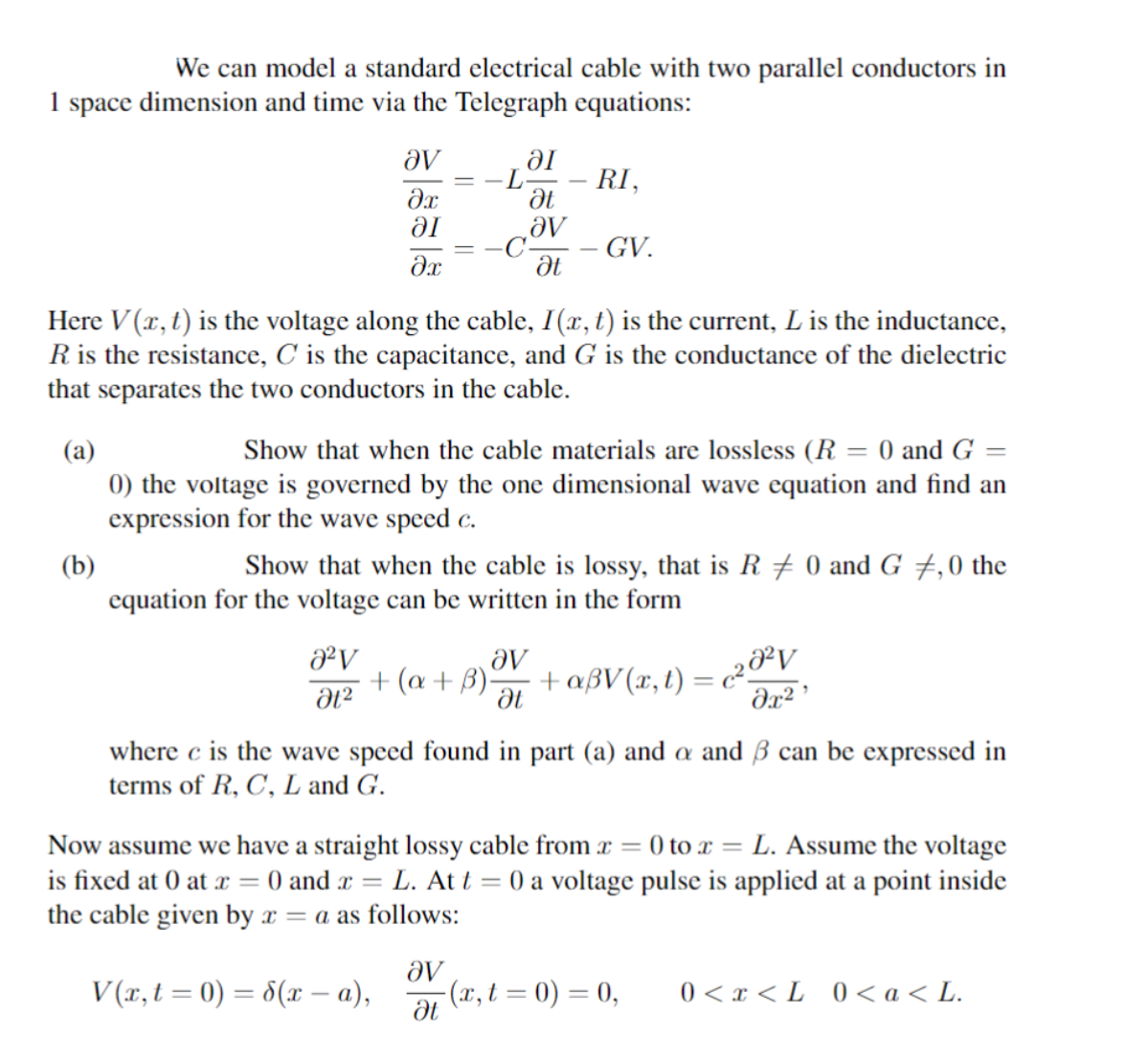Answered step by step
Verified Expert Solution
Question
1 Approved Answer
We can model a standard electrical cable with two parallel conductors in 1 space dimension and time via the Telegraph equations: av - ,


We can model a standard electrical cable with two parallel conductors in 1 space dimension and time via the Telegraph equations: av - , t av GV. t Here V(x, t) is the voltage along the cable, I (x, t) is the current, L is the inductance, R is the resistance, C is the capacitance, and G is the conductance of the dielectric that separates the two conductors in the cable. (a) (b) Show that when the cable materials are lossless (R = 0 and G = 0) the voltage is governed by the one dimensional wave equation and find an expression for the wave speed c. Show that when the cable is lossy, that is R 0 and G ,0 the equation for the voltage can be written in the form aV 2 +(a + B)- av at +V (x,t) = cV 2 where c is the wave speed found in part (a) and a and can be expressed in terms of R, C, L and G. Now assume we have a straight lossy cable from x = 0 to x = L. Assume the voltage is fixed at 0 at x = 0 and x = L. At t = 0 a voltage pulse is applied at a point inside the cable given by x = a as follows: av V(x, t = 0) = 8(x a), - t -(x, t = 0) = 0, 0 (c) Solve the PDE with the boundary conditions and initial conditions given above by using an eigenfunction expansion of the form , V (x,t) = An(t) sin(x), n=1 and determine An. Show that the solution can be written in the form V(x,t) = [En exp(-dt) sin(wt) + Fn exp(-dt) cos(wnt)] sin(nx), n=1 with 2 Wn = (C) - (- B) d = + 2 (d) (e) Solve for the coefficients En and Fn. Note that the wave frequencies are not multiples of one another in general so that waves at different frequencies move at different speeds (a phe- nomenon known as dispersion). But for a special value of a is is possible to eliminate this dispersion and have all waves move at the same speed. Determine this value of a and show that in this case the solution has the form V(x,t) = exp(dt) [f(x ct)+g(x+ct)]
Step by Step Solution
There are 3 Steps involved in it
Step: 1

Get Instant Access to Expert-Tailored Solutions
See step-by-step solutions with expert insights and AI powered tools for academic success
Step: 2

Step: 3

Ace Your Homework with AI
Get the answers you need in no time with our AI-driven, step-by-step assistance
Get Started


